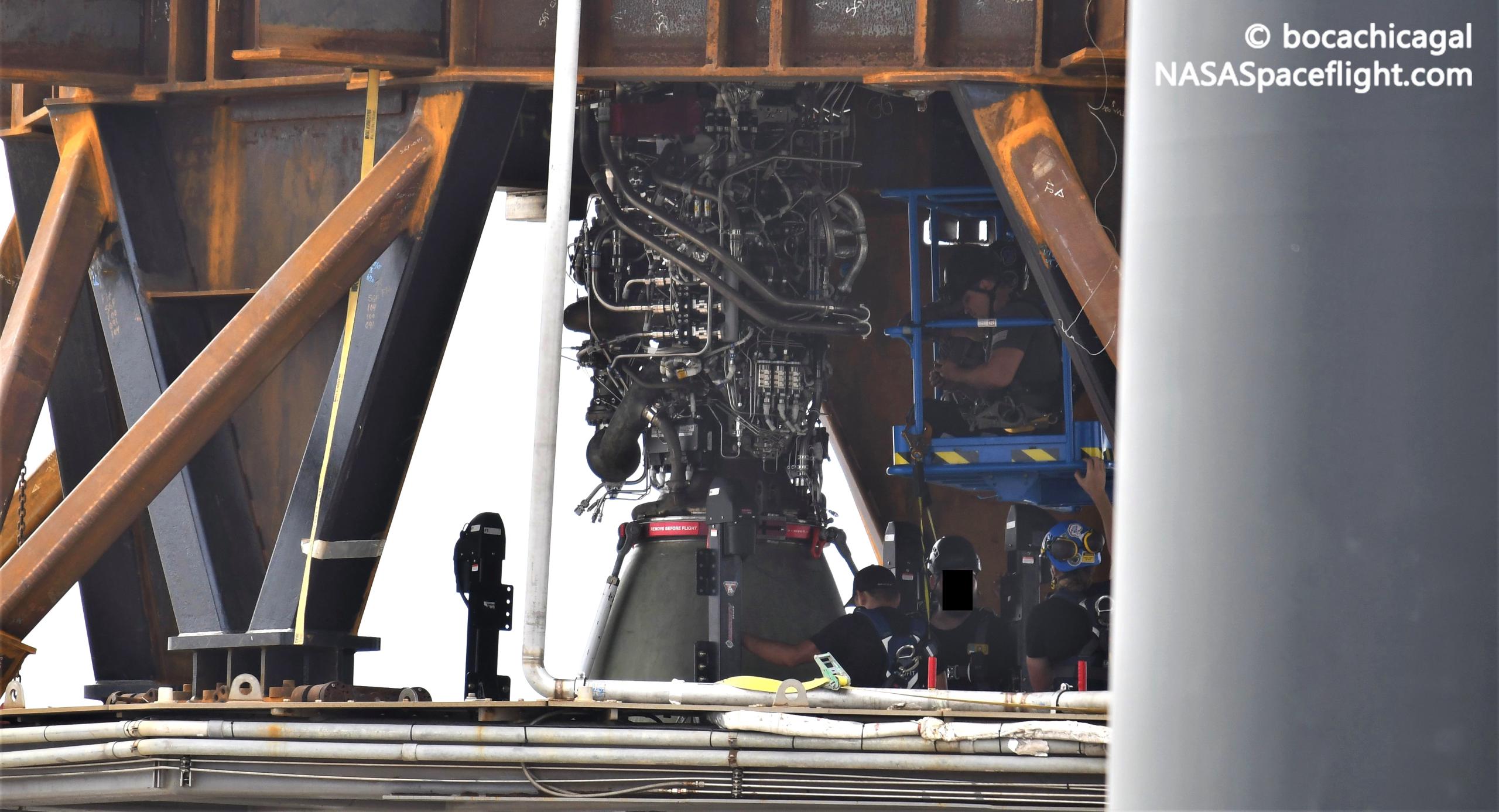

News
SpaceX begins installing Raptor engines on first Super Heavy booster
SpaceX has installed a Raptor engine on a Super Heavy booster prototype for the first time, defying expectations and setting the rocket up for two major tests as early as this week.
On Thursday, July 8th, SpaceX briefly filled Super Heavy Booster 3’s (B3) propellant tanks with benign nitrogen gas. The vehicle seemingly came to life for the first time that morning when it was spotted using its tank vents – a generally incontrovertible sign that the complex mechanical system that is a rocket is functional. Later that day, the public highway and beach adjacent to SpaceX’s launch site were briefly closed for what was expected to be an ambient pressure and/or cryogenic proof test.
Booster 3 never got to the cryogenic proof test – easily confirmed thanks to the frost that forms on most rockets’ exteriors as main tanks are filled with extremely cold liquid nitrogen. No such frost formed, no major venting occurred, and the road was only closed for the first two hours of a six-hour test window.
According to Next Spaceflight’s Michael Baylor, SpaceX did complete a “brief ambient proof” during that relatively short closure, though very little activity was visible during the test. Friday’s 14-hour test window was canceled the next morning, leaving SpaceX the rest of the weekend to prepare the first functional Super Heavy booster for its first truly challenging test – cryo proof.
Instead, late on Saturday, July 10th, SpaceX rolled Raptor 57 (R57) from build site to launch pad and began installing the engine on Booster 3 just a few hours later. Prior to Raptor 57’s installation, most prominent (albeit unofficial) voices in the SpaceX fan community anticipated no more than cryogenic proof testing for Booster 3 – no static fires, in other words.
However, it was fairly apparent that Super Heavy Booster 3 and the modified suborbital launch mount it was installed on were both outfitted for testing more complex than a cryo proof alone. Notably, B3 rolled to the pad with multiple labeled methane pressure vessels (COPVs), extensive plumbing, and autogenous pressurization control panels installed – all of which continued to be actively worked on after the booster was installed at the launch site.
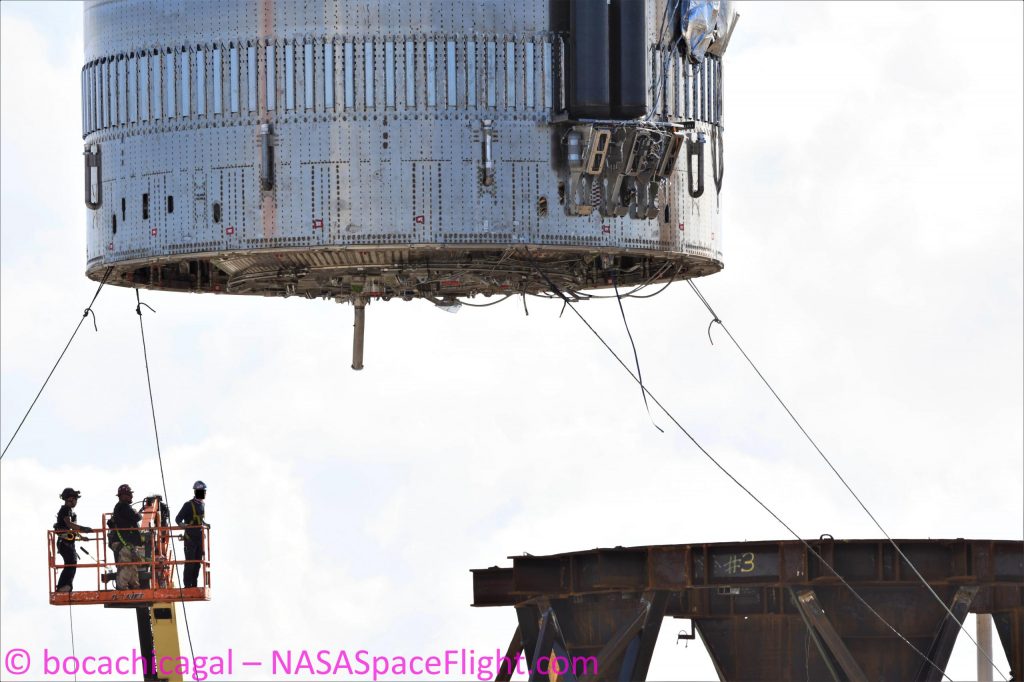
While it’s technically not impossible to build a ground testing Starship prototype that’s capable of a wide variety of tests but never actually used to its full extent, doing so would be well out of character for SpaceX and make little sense in general. As such, it’s not a major surprise that SpaceX has now begun to install Raptor engines on Super Heavy Booster 3. What is surprising is that SpaceX is installing Raptor engines on a first-of-its-kind Super Heavy prototype before any fully integrated booster has completed cryogenic testing.
Based on Starship’s ~18-month test history, there is a real possibility Super Heavy B3 will fail during cryogenic proof testing. Even accepting that SpaceX’s testing processes and expertise have matured dramatically after dozens of Starship tests on the ground and in flight, the chance remains. In other words, SpaceX’s decision to begin installing Raptors on Super Heavy before ensuring structural and mechanical integrity implies some combination of unusual confidence in a prototype as unproven as Booster 3 and a distinct lack of concern at the prospect of losing at least two Raptor engines in a hypothetical test failure.
Knowing SpaceX and CEO Elon Musk’s goals for Raptor, the latter implication isn’t much of a surprise but it’s always interesting to have direct visual evidence that Raptor is, in fact, so cheap to build and easy to install that the minor effort and few days of possible delays required to reduce the risk of losing multiple engines just aren’t worth it.
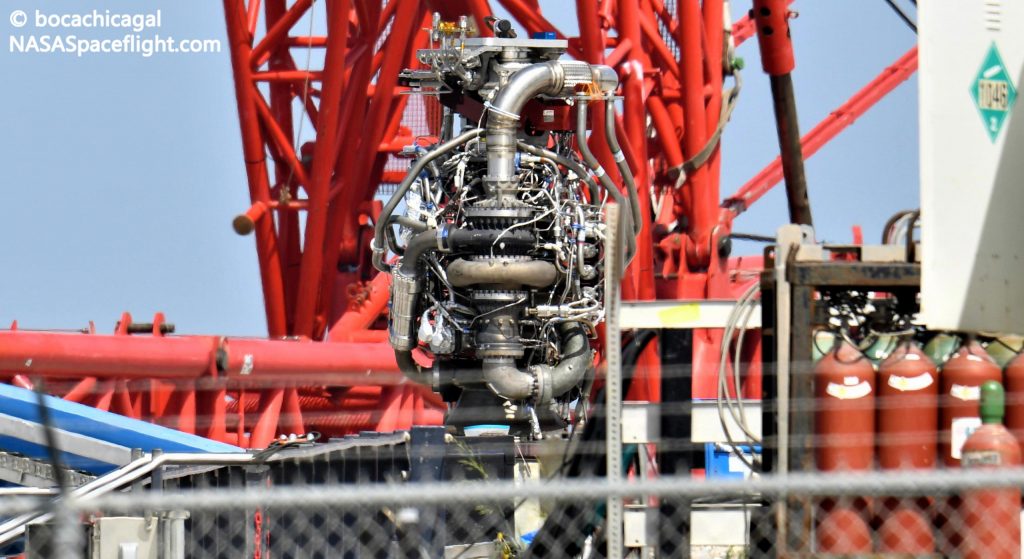
As such, it’s now clear that Super Heavy Booster 3 will have at least one or two Raptor engines installed during its very first cryogenic proof test – currently no earlier than 12pm to 8pm CDT (UTC-5) on Monday, July 12th. Assuming SpaceX’s confidence is well-placed and Booster 3 passes its first cryogenic tests without issue, the real question now is how many Raptors will be installed and ignited during Super Heavy’s first static fire test?
News
Tesla debuts hands-free Grok AI with update 2025.26: What you need to know
All new Tesla vehicles delivered on or after July 12, 2025, will include Grok AI out of the box

Tesla has begun rolling out Grok, an in-car conversational AI assistant developed by xAI, to eligible vehicles starting July 12. The feature marks the most direct integration yet between Elon Musk’s artificial intelligence startup and Tesla’s consumer product lineup, offering drivers hands-free access to a chat-style companion while on the road.
Grok comes pre-installed on new vehicles
According to Tesla’s FAQ page for the feature, all new vehicles delivered on or after July 12, 2025, will include Grok AI out of the box. Owners of older vehicles may gain access through an over-the-air update, provided their vehicle meets a few hardware and software requirements.
Specifically, Grok is currently only supported on Tesla models equipped with an AMD infotainment processor and running vehicle software version 2025.26 and higher. Compatible models include the Model S, Model 3, Model X, Model Y, and Cybertruck. A Premium Connectivity subscription or active Wi-Fi connection is also required.
Tesla notes that additional vehicle compatibility may arrive in future software updates.
Grok’s features and limitations for now
Drivers can engage with Grok using the App Launcher or by pressing and holding the voice command button on the steering wheel. Grok is designed to answer questions and hold conversations using natural language, offering responses tailored to its chosen personality—ranging from “Storyteller” to the more eccentric “Unhinged.”
For fun, Tesla posted a demonstration of Grok likely running on “Unhinged” talking about what it would do to Optimus when they are on a date, much to the shock of the humanoid robot’s official social media account.
It should be noted, however, that Grok cannot currently issue commands to the vehicle itself, at least for now. Traditional voice commands for tasks like climate control, navigation, or media remain separate from Grok as of writing.
The feature is being released in Beta and does not require a Grok account or xAI subscription to activate, although that policy may change over time.
Grok privacy and in-car experience
Tesla emphasizes that interactions with Grok are securely processed by xAI and not linked to a user’s Tesla account or vehicle. Conversations remain anonymous unless a user signs into Grok separately to sync their history across devices.
Tesla has also begun promoting Grok directly on its official vehicle webpages, showcasing the feature as part of its in-car experience, further highlighting the company’s increasing focus on AI and infotainment features on its all-electric vehicles.
News
Tesla cleared in Canada EV rebate investigation
Tesla has been cleared in an investigation into the company’s staggering number of EV rebate claims in Canada in January.
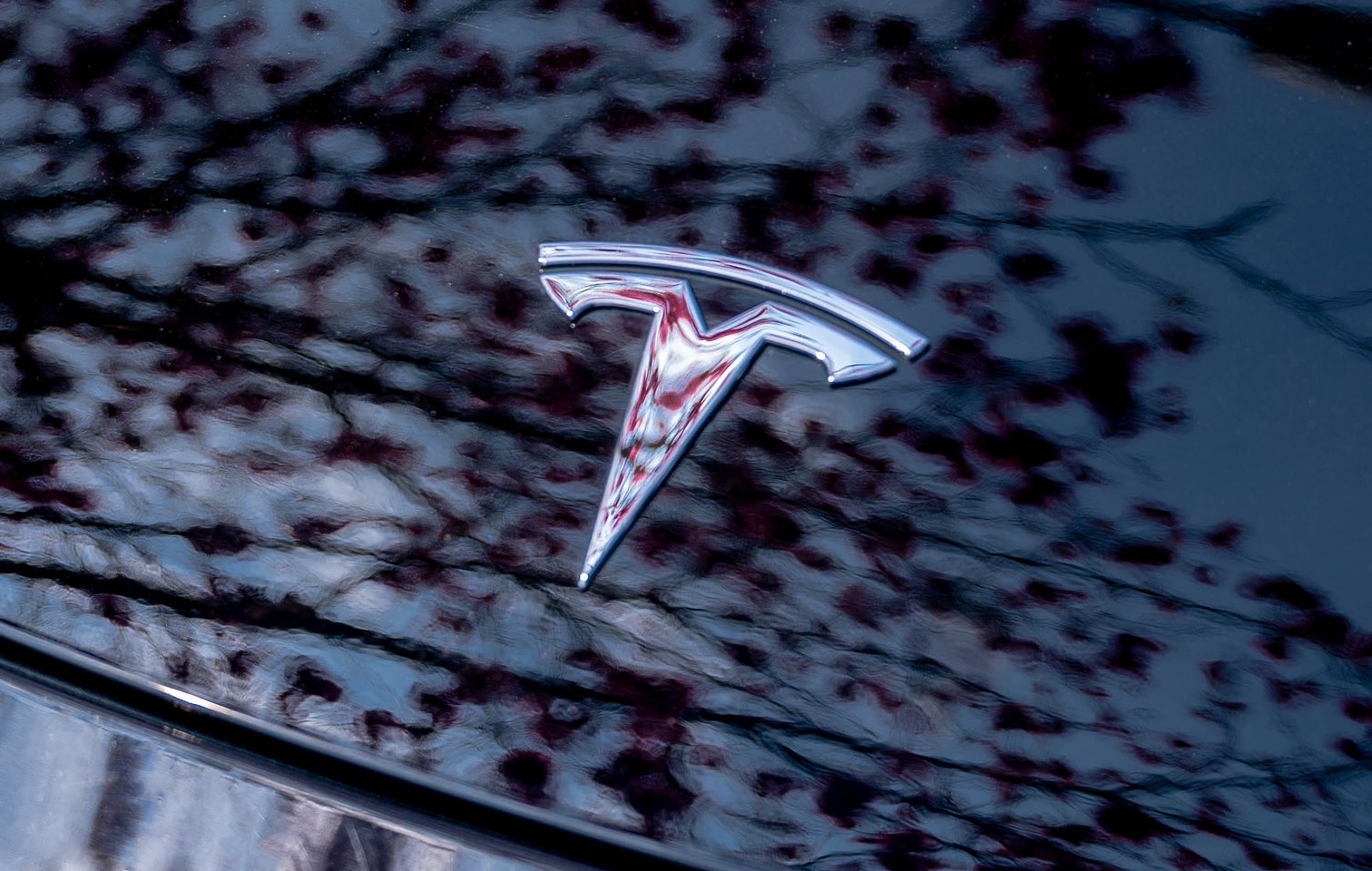
Canadian officials have cleared Tesla following an investigation into a large number of claims submitted to the country’s electric vehicle (EV) rebates earlier this year.
Transport Canada has ruled that there was no evidence of fraud after Tesla submitted 8,653 EV rebate claims for the country’s Incentives for Zero-Emission Vehicles (iZEV) program, as detailed in a report on Friday from The Globe and Mail. Despite the huge number of claims, Canadian authorities have found that the figure represented vehicles that had been delivered prior to the submission deadline for the program.
According to Transport Minister Chrystia Freeland, the claims “were determined to legitimately represent cars sold before January 12,” which was the final day for OEMs to submit these claims before the government suspended the program.
Upon initial reporting of the Tesla claims submitted in January, it was estimated that they were valued at around $43 million. In March, Freeland and Transport Canada opened the investigation into Tesla, noting that they would be freezing the rebate payments until the claims were found to be valid.
READ MORE ON ELECTRIC VEHICLES: EVs getting cleaner more quickly than expected in Europe: study
Huw Williams, Canadian Automobile Dealers Association Public Affairs Director, accepted the results of the investigation, while also questioning how Tesla knew to submit the claims that weekend, just before the program ran out.
“I think there’s a larger question as to how Tesla knew to run those through on that weekend,” Williams said. “It doesn’t appear to me that we have an investigation into any communication between Transport Canada and Tesla, between officials who may have shared information inappropriately.”
Tesla sales have been down in Canada for the first half of this year, amidst turmoil between the country and the Trump administration’s tariffs. Although Elon Musk has since stepped back from his role with the administration, a number of companies and officials in Canada were calling for a boycott of Tesla’s vehicles earlier this year, due in part to his association with Trump.
News
Tesla Semis to get 18 new Megachargers at this PepsiCo plant
PepsiCo is set to add more Tesla Semi Megachargers, this time at a facility in North Carolina.
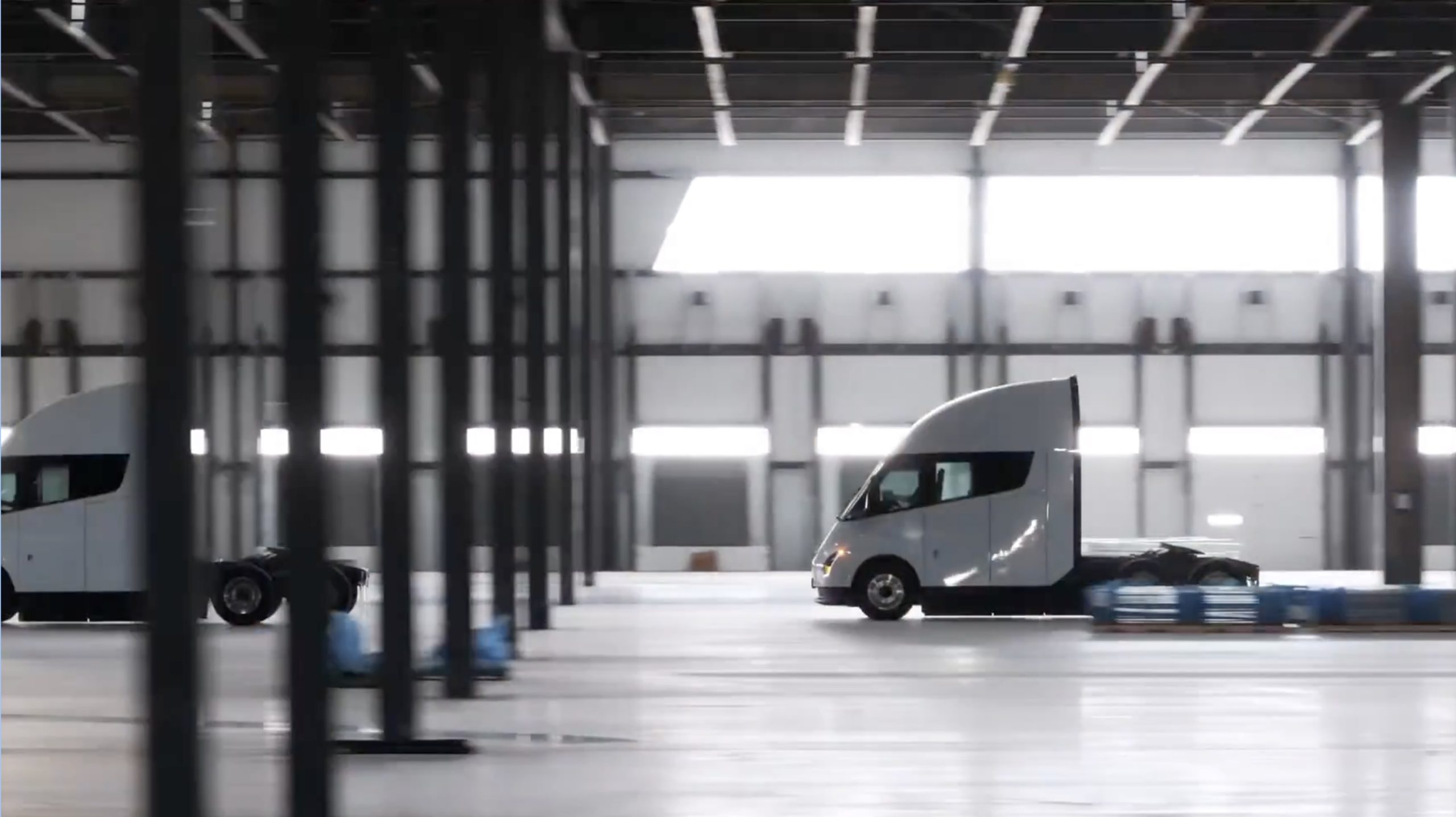
Tesla partner PepsiCo is set to build new Semi charging stations at one of its manufacturing sites, as revealed in new permitting plans shared this week.
On Friday, Tesla charging station scout MarcoRP shared plans on X for 18 Semi Megacharging stalls at PepsiCo’s facility in Charlotte, North Carolina, coming as the latest update plans for the company’s increasingly electrified fleet. The stalls are set to be built side by side, along with three Tesla Megapack grid-scale battery systems.
The plans also note the faster charging speeds for the chargers, which can charge the Class 8 Semi at speeds of up to 1MW. Tesla says that the speed can charge the Semi back to roughly 70 percent in around 30 minutes.
You can see the site plans for the PepsiCo North Carolina Megacharger below.
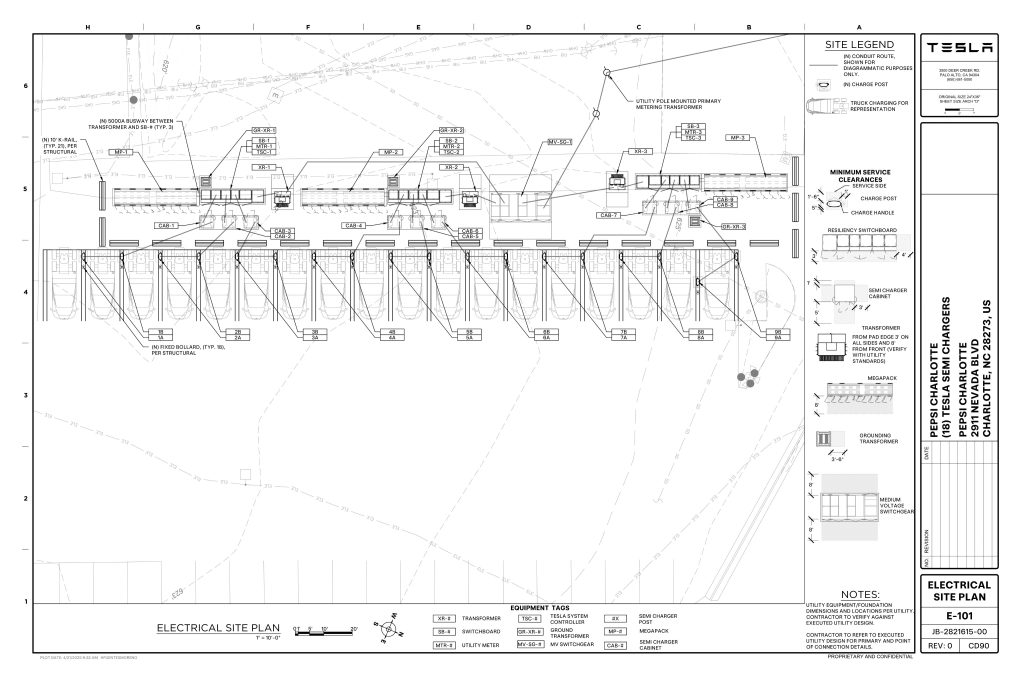
Credit: PepsiCo (via MarcoRPi1 on X)
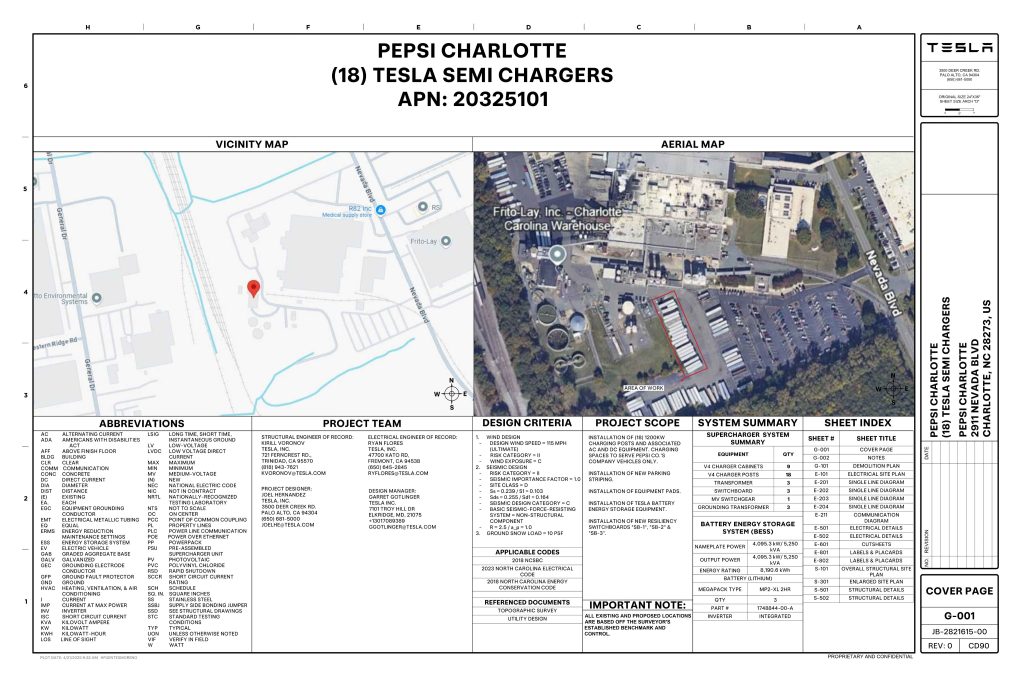
Credit: PepsiCo (via MarcoRPi1 on X)
READ MORE ON THE TESLA SEMI: Tesla to build Semi Megacharger station in Southern California
PepsiCo’s Tesla Semi fleet, other Megachargers, and initial tests and deliveries
PepsiCo was the first external customer to take delivery of Tesla’s Semis back in 2023, starting with just an initial order of 15. Since then, the company has continued to expand the fleet, recently taking delivery of an additional 50 units in California. The PepsiCo fleet was up to around 86 units as of last year, according to statements from Semi Senior Manager Dan Priestley.
Additionally, the company has similar Megachargers at its facilities in Modesto, Sacramento, and Fresno, California, and Tesla also submitted plans for approval to build 12 new Megacharging stalls in Los Angeles County.
Over the past couple of years, Tesla has also been delivering the electric Class 8 units to a number of other companies for pilot programs, and Priestley shared some results from PepsiCo’s initial Semi tests last year. Notably, the executive spoke with a handful of PepsiCo workers who said they really liked the Semi and wouldn’t plan on going back to diesel trucks.
The company is also nearing completion of a higher-volume Semi plant at its Gigafactory in Nevada, which is expected to eventually have an annual production capacity of 50,000 Semi units.
Tesla executive teases plan to further electrify supply chain
-

 Elon Musk2 weeks ago
Elon Musk2 weeks agoTesla investors will be shocked by Jim Cramer’s latest assessment
-

 Elon Musk2 days ago
Elon Musk2 days agoxAI launches Grok 4 with new $300/month SuperGrok Heavy subscription
-

 Elon Musk5 days ago
Elon Musk5 days agoElon Musk confirms Grok 4 launch on July 9 with livestream event
-

 News1 week ago
News1 week agoTesla Model 3 ranks as the safest new car in Europe for 2025, per Euro NCAP tests
-

 Elon Musk2 weeks ago
Elon Musk2 weeks agoA Tesla just delivered itself to a customer autonomously, Elon Musk confirms
-

 Elon Musk1 week ago
Elon Musk1 week agoxAI’s Memphis data center receives air permit despite community criticism
-

 News2 weeks ago
News2 weeks agoXiaomi CEO congratulates Tesla on first FSD delivery: “We have to continue learning!”
-

 News2 weeks ago
News2 weeks agoTesla sees explosive sales growth in UK, Spain, and Netherlands in June

















